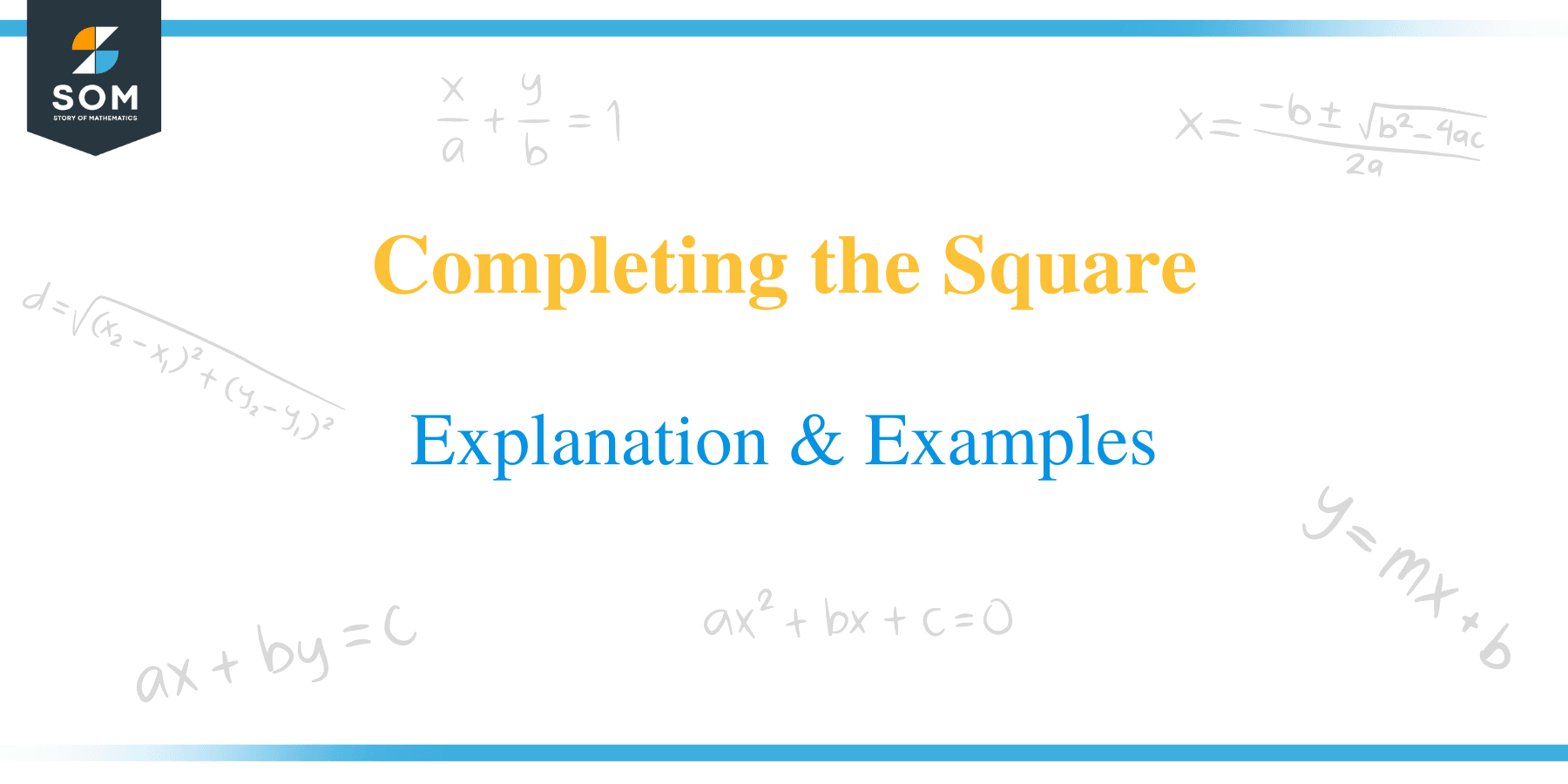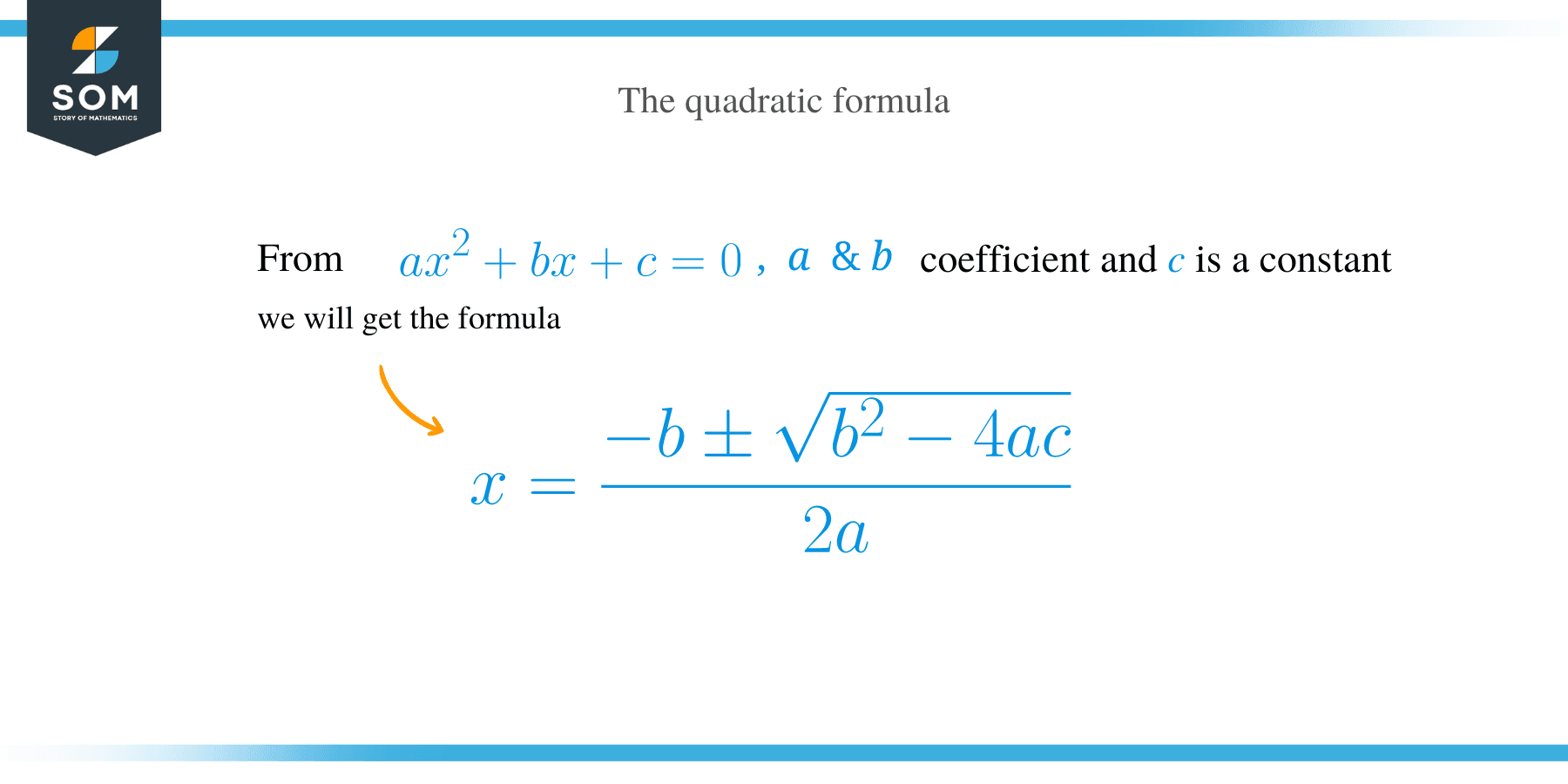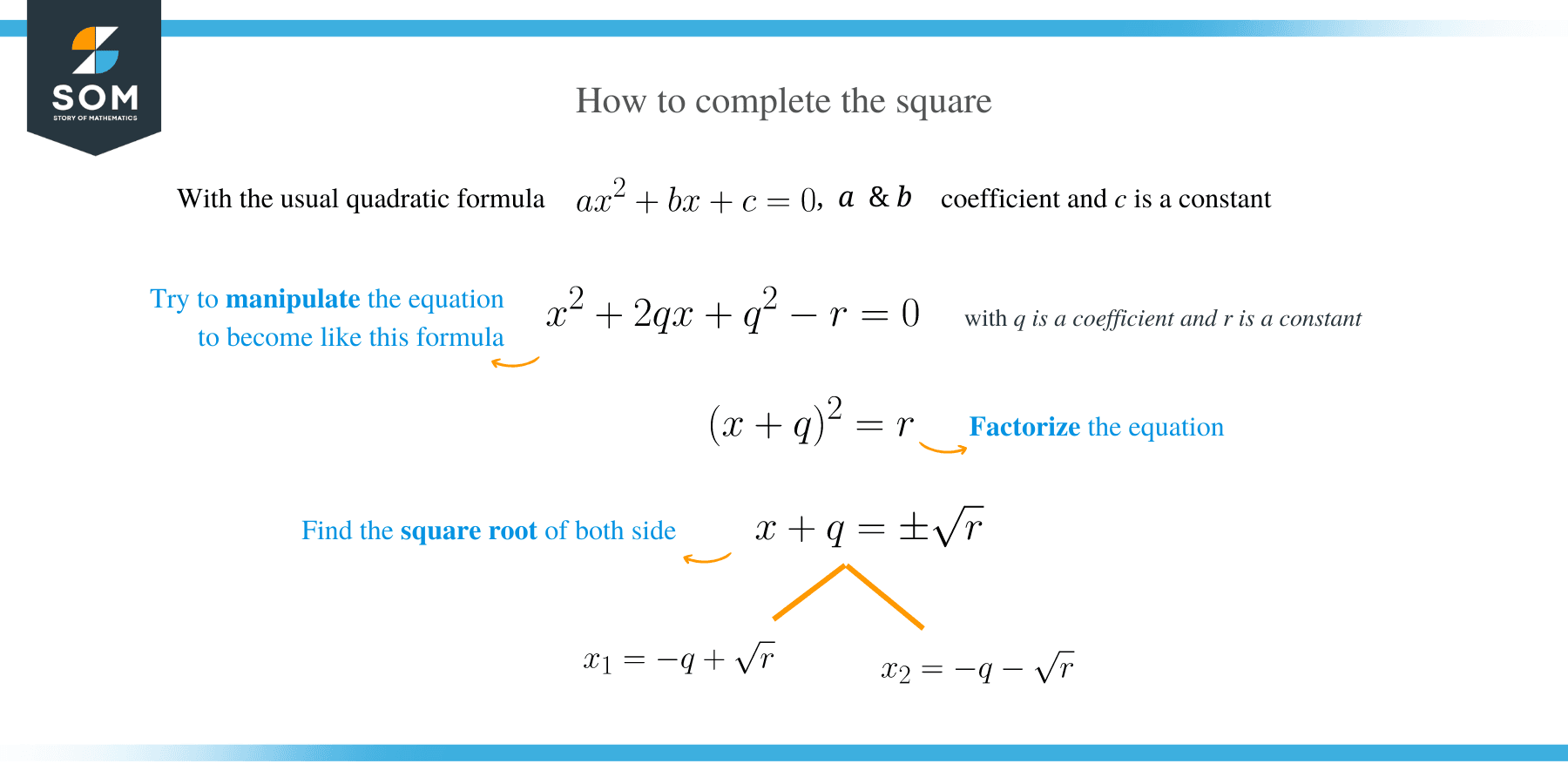- Home
- >
- Completing the Square – Explanation & Examples
JUMP TO TOPIC
Completing the Square – Explanation & Examples
 So far, you’ve learned how to factorize special cases of quadratic equations using the difference of square and perfect square trinomial method.
So far, you’ve learned how to factorize special cases of quadratic equations using the difference of square and perfect square trinomial method.
These methods are relatively simple and efficient; however, they are not always applicable to all quadratic equations.
In this article, we will learn how to solve all types of quadratic equations using a simple method known as completing the square. But before that, let’s have an overview of the quadratic equations.
A quadratic equation is a polynomial of second degree, usually in the form of f(x) = ax2 + bx + c where a, b, c, ∈ R, and a ≠ 0. The term ‘a’ is referred to as the leading coefficient, while ‘c’ is the absolute term of f (x).
Every quadratic equation has two values of the unknown variable, usually known as the roots of the equation (α, β). We can obtain the root of a quadratic equation by factoring the equation.
What is Completing the Square?
Completing the square is a method of solving quadratic equations that we cannot factorize.
Completing the square means manipulating the form of the equation so that the left side of the equation is a perfect square trinomial.
How to Complete the Square?
To solve a quadratic equation; ax2 + bx + c = 0 by completing the square.
The following are the procedures:
- Manipulate the equation in the form such that the c is alone on the right side.
- If the leading coefficient a is not equals to 1, then divide each term of the equation by a such that the co-efficient of x2 is 1.
- Add both sides of the equation by the square of half of the co-efficient of term-x
⟹ (b/2a)2.
- Factor the left side of the equation as the square of the binomial.
- Find the square root of both sides of the equation. Apply the rule (x + q) 2 = r, where
x + q= ± √r
- Solve for variable x
 Complete the square formula
Complete the square formula
In mathematics, completing the square is used to compute quadratic polynomials. Completing the Square Formula is given as: ax2 + bx + c ⇒ (x + p)2 + constant.
The quadratic formula is derived using a method of completing the square. Let’s see.
Given a quadratic equation ax2 + bx + c = 0;
Isolate the term c to right side of the equation
ax2 + bx = -c
Divide each term by a.
x2 + bx/a = -c/a
Write as a perfect square
x 2 + bx/a + (b/2a)2 = – c/a + (b/2a)2
(x + b/2a) 2= (-4ac+b2)/4a2
(x + b/2a) = ±√ (-4ac+b2)/2a
x = – b/2a ±√ (b2– 4ac)/2a
x = [- b ±√ (b2– 4ac)]/2a………. (This is the quadratic formula)
 Now let’s solve a couple of quadratic equations using the completing square method.
Now let’s solve a couple of quadratic equations using the completing square method.
Example 1
Solve the following quadrating equation by completing square method:
x2 + 6x – 2 = 0
Solution
Transform the equation x2 + 6x – 2 = 0 to (x + 3)2 – 11 = 0
Since (x + 3)2 =11
x + 3 = +√11 or x + 3 = -√11
x = -3+√11
OR
x = -3 -√11
But √11 =3.317
Therefore, x = -3 +3.317 or x = -3 -3.317,
x = 0.317 or x = -6.317
Example 2
Solve by completing square x2 + 4x – 5 = 0
Solution
The standard form of completing square is;
(x + b/2)2 = -(c – b2/4)
In this case, b = 4, c = -5. Substitute the values;
So, (x + 4/2)2 = -(-5 – 42/4)
(x + 2)2 = 5 + 4
⇒ (x + 2)2 = 9
⇒ (x + 2) = ±√9
⇒ (x + 2) = ± 3
⇒ x + 2 = 3, x + 2 = -3
⇒ x = 1, -5
Example 3
Solve x2 + 10x − 4 = 0
Solution
Rewrite the quadratic equation by isolating c on the right side.
x2 + 10x = 4
Add both sides of the equation by (10/2)2 = 52 = 25.
= x2 + 10x + 25 = 4 + 25
= x2 + 10x + 25 = 29
Write the left side as a square
(x + 5) 2 = 29
x = -5 ±√29
x = 0.3852, – 10.3852
Example 4
Solve 3x2 – 5x + 2 = 0
Solution
Divide each term of the equation by 3 to make the leading coefficient equals to 1.
x2 – 5/3 x + 2/3 = 0
Comparing with the standard form; (x + b/2)2 = -(c-b2/4)
b = -5/3; c = 2/3
c – b2/4 = 2/3 – [(5/3)2/4] = 2/3 – 25/36 = -1/36
Therefore,
⇒ (x – 5/6)2 = 1/36
⇒ (x – 5/6)= ± √(1/36)
⇒ x – 5/6 = ±1/6
⇒ x = 1, -2/3
Example 5
Solve x2 – 6x – 3 = 0
Solution
x2 – 6x = 3
x2 – 6x + (-3)2 = 3 + 9
(x – 3)2 = 12
x – 3= ± √12
x = 3 ± 2√3
Example 6
Solve: 7x2 − 8x + 3=0
Solution
7x2 − 8x = −3
x2 −8x/7 = −3/7
x2 – 8x/7 +(−4/7)2 = −3/7+16/49
(x − 4/7)2 = −5/49
x = 4/7 ± (√7) i/5
(x – 3)2 = 12
x − 3 = ±√12
x = 3 ± 2√3
Example 7
Solve 2x2 – 5x + 2 = 0
Solution
Divide each term by 2
x2 – 5x/2 + 1 = 0
⇒ x2 – 5x/2= -1
Add (1/2 × −5/2) = 25/16 to both sides of the equation.
= x2 – 5x/2 + 25/16 = -1 + 25/16
= (x – 5/4)2 = 9/16
= (x – 5/4)2 = (3/4)2
⇒ x – 5/4= ± 3/4
⇒ x = 5/4 ± 3/4
x = 1/2, 2
Example 8
Solve x2– 10x -11= 0
Solution
Write the trinomial as a perfect square
(x2 – 10x + 25) – 25 – 11 = 36
⇒ (x – 5)2 – 36 =0
⇒ (x – 5)2 = 36
Find the square roots on both sides of the equation
x – 5 = ± √36
x -5 = ±6
x = −1 or x =11
Example 9
Solve the following equation by completing the square
x2 + 10x – 2 = 0
Solution
x2 + 10x – 2 = 0
⇒ x2 + 10x = 2
⇒ x2 + 10x + 25 = 2 + 25
⇒ (x + 5)2 = 27
Find the square roots on both sides of the equation
⇒ x + 5 = ± √27
⇒ x + 5 = ± 3√3
x = -5 ± 3√3
Example 10
Solve x2 + 4x + 3 = 0
Solution
x2 + 4x + 3 = 0 ⇒ x2 + 4x = -3
x2 + 4x + 4 = – 3 + 4
Write the trinomial as a perfect square
(x + 2)2 = 1
Determine the square roots on both sides.
(x + 2) = ± √1
x= -2+1= -1
OR
x = -2-1= -3
Example 11
Solve the equation below using the method of completing the square.
2x2 – 5x + 1 = 0
Solution
x2−5x/2 + 1/2=0
x2 −5x/2 = −1/2
(1/2) (−5/2) =−5/4
(−5/4)2 = 25/16
x2 − 5x/2 + 25/16 = −1/2 + 25/16
(x – 5/4) 2 = 17/16
Find the square of both sides.
(x – 5/4) = ± √ (17/16)
x = [5 ± √ (17)]/4

 Complete the square formula
Complete the square formula